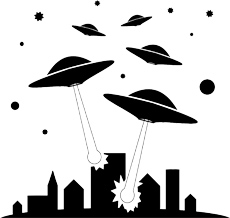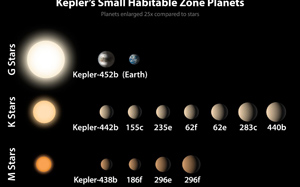Lonely Planet Earth - A Group of One?
by
Prof John C. Walton
April 2016
Prof John Walton BSc PhD DSc CChem FRSC FRSE is Research Professor in Organic Chemistry at the University of St Andrews, Scotland, and has published around 300 peer-reviewed papers. He also has a deep interest in matters of science and faith and lectures regularly on origin of life chemistry.
In the last century, vocal science pundits, typified by Carl Sagan and Isaac Asimov, taught the world to believe that the Universe would be teaming with alien life. Enthused by the molecules to man evolutionary scenario they were supremely confident that our galaxy, the Milky Way, would be plentifully populated with a rich variety of life forms. An enormous Sci-Fi industry of books, dramas and TV series grew up on and fed back into these dreams. This lore was so embedded in the human psyche that when Orson Wells broadcast a programme purporting to be an eyewitness account of an invasion of America from Mars, tens of thousands panicked and fled their cities really thinking there might be hostile Martian life forms!
 As genuine scientific exploration of space has progressed, expectations of encountering life have steadily declined. Many fascinating facts about planets and their moons, about dwarf planets and even comets have been discovered. The much-hyped search for life, during missions to the Moon, Mars, Jupiter and other planets discovered practically nothing – except water. There are still scientists who think there might be microscopic life on Mars or on the moons of Saturn – particularly those hoping for funding for more missions [1] - but they have little to base such optimism on.
As genuine scientific exploration of space has progressed, expectations of encountering life have steadily declined. Many fascinating facts about planets and their moons, about dwarf planets and even comets have been discovered. The much-hyped search for life, during missions to the Moon, Mars, Jupiter and other planets discovered practically nothing – except water. There are still scientists who think there might be microscopic life on Mars or on the moons of Saturn – particularly those hoping for funding for more missions [1] - but they have little to base such optimism on.
Projects like SETI (Search for Extra-terrestrial Intelligence) and MOP (Microwave Observing Programme) have been monitoring various electromagnetic wavelengths for transmissions from beyond our solar system. During over 50 years of listening, with increasingly sensitive and sophisticated equipment, the only outcome has been the sound of silence.
 The search for exoplanets picked up dramatically with the launch of the Kepler space observatory in 2009. At the time of writing nearly 2000 exoplanets have been confirmed from a total of about 5000 candidates.[2] [3] It now seems certain that planets are just as abundant as stars in our galaxy and “super-earths” are common. At present information does not extend much beyond their orbital periods, eccentricities, mass and radius. Occasionally atmospheric gases can be identified. Significantly, fewer than ten exoplanets are currently considered as potentially habitable.
The search for exoplanets picked up dramatically with the launch of the Kepler space observatory in 2009. At the time of writing nearly 2000 exoplanets have been confirmed from a total of about 5000 candidates.[2] [3] It now seems certain that planets are just as abundant as stars in our galaxy and “super-earths” are common. At present information does not extend much beyond their orbital periods, eccentricities, mass and radius. Occasionally atmospheric gases can be identified. Significantly, fewer than ten exoplanets are currently considered as potentially habitable.
These astrophysical findings have drawn attention to just what a special place Earth is and to the delicate balance of factors needed for a planet to support life. Earth is in the Sun’s “Goldilocks Zone” where liquid water can flow on the surface all year round. It has very large oceans that distribute heat around the globe and moderate the world’s weather. It has a dense atmosphere composed of just the right mix of gases needed to support plant and animal life. Earth also possesses a magnetic field of just the right strength to deflect away lethal cosmic rays and prevent solar winds from stripping away the atmosphere.
The Moon’s large size and close location provide sufficient gravitational force to stabilise Earth’s tilt angle thereby limiting temperature and climate fluctuations. The giant planet Jupiter protects Earth from collisions with space debris. The Sun is also more stable than most stars and the light it radiates varies by only about 0.1 % over time. The result is that violent climate changes don’t occur on Earth making it suitable for life to persist. Our solar system orbits in the galactic habitable zone protected from collisions, from explosive supernovae and from the bursts of destructive radiation discharged from the galactic centre. These and many other factors are essential for living organisms to function long term. Few if any Earth-like exoplanets will match these criteria.
The silence from the cosmos has begun to prompt questions about why this could be so, given the supposed universality, inevitability and potency of evolutionary forces. Stephen Webb published a book with the intriguing title: “If the Universe is Teaming with Aliens – Where is Everybody?” [4] Paul Davies has drawn attention to Earth’s evident lonesomeness in several articles and enlarged on the theme in his book: “The Eerie Silence: Are We Alone in the Universe?” [5] Jeffrey Kluger, writing in TIME magazine under the title: “Maybe We Really Are Alone In the Universe” said: “Forget the overwhelming math - those trillions upon trillions of planets that are likely out there, at least some of which should be inhabited. Snuff out the one match head that is life on Earth, and the whole universe goes biologically black. We can search for biology all we want, send up all the here-we-are signal flares we can invent, but the fact is, no one will answer – ever - because no one is there.” [6] Even Professor Brian Cox, in a BBC documentary, echoed the view that we are alone in the universe, that alien life is all but impossible and that humanity is 'unique'. [7]
A major factor that makes the loneliness of planet Earth understandable is the growing realisation of the immense difficulties faced by origin of life scenarios. The naive optimism that followed Miller and Urey’s production of amino acids by sparking mixtures of methane, ammonia and water proved to be illusory. Origin of life research has struggled to come up with geologically plausible chemistry for even the small building blocks of living systems. This is made plain by the huge variety and diversity of scenarios on offer - from an oceanic primordial soup, the deep sea vent hypothesis, the RNA world, the clay surfaces hypothesis, the PAH world, the lipid world, the polyphosphate world, the radioactive beach hypothesis, to extra-terrestrial organic molecules - to mention a few leading candidates.
Half a century of research has delivered essentially no progress with the much more chemically intractable problem of how the building blocks could assemble in the right, information-loaded ways to make bioactive polymers. A fresh perspective on this enigma has opened recently as the search for new pharmaceuticals has become urgent due to spreading resistance in micro-organisms. The staggeringly immense size of ‘Chemical Space’ – the totality of all possible chemical compounds – is coming to be more widely appreciated. The total number of molecules that could be made from only 30 atoms – that’s molecules the size of just the basic building blocks of proteins or DNA - is in the range 1020 to 1024. That’s actually about the same as the total number of stars in the observable universe which tots up to be ~ 1024. Most pharmaceuticals contain many more atoms than 30, so estimates for “drug-like” Chemical Space predict it contains over 1060 molecules. [8] Of course, even these huge numbers are insignificant in comparison with protein or nucleic acid Spaces. The number of polypeptide chains of modest length 250 units, drawn from the 20 natural amino acids, exceeds [9] the ‘trans-astronomical’ number of 10325. Chemical Space is actually immeasurably larger than astronomical space!
 The Chemical Abstracts Registry (CAS Registry) holds information on virtually every chemical substance made by the world’s total scientific community. It currently contains about 108 substances and is growing at about 5 x 106 substances per year. If activity continued at this rate, more than 1054 years of work by the entire world’s laboratories would be needed just to explore “drug like” Chemical Space! As Philip Ball noted in a recent article “we haven’t the faintest hope of making any more than a miniscule fraction of them.” [8] Because of the urgent need for new leads towards antibiotics, several research teams are developing computational algorithms as an alternative way to reconnoitre for useful molecules. However, as Philip Ball also notes [8] exploring the ocean of possible compounds is impossible even computationally!
The Chemical Abstracts Registry (CAS Registry) holds information on virtually every chemical substance made by the world’s total scientific community. It currently contains about 108 substances and is growing at about 5 x 106 substances per year. If activity continued at this rate, more than 1054 years of work by the entire world’s laboratories would be needed just to explore “drug like” Chemical Space! As Philip Ball noted in a recent article “we haven’t the faintest hope of making any more than a miniscule fraction of them.” [8] Because of the urgent need for new leads towards antibiotics, several research teams are developing computational algorithms as an alternative way to reconnoitre for useful molecules. However, as Philip Ball also notes [8] exploring the ocean of possible compounds is impossible even computationally!
The collective enterprise of all the world’s expertise, applied in all the world’s laboratories, till the end of civilisation, couldn’t even explore drug-like Chemical Space. What chance then has some random chemical evolutionary process of locating and of making just the small selection of special molecules needed to set in motion living organisms? It’s the realisation of how impossible this is anywhere on Earth, or in the cosmos, that is driving the current pessimism about the existence of alien life forms.
It has become evident that life on Earth is very, very special. The postulated age of the Universe, 13.8 x 109 years, is far, far too small for spontaneous abiogenesis to occur anywhere in the entire universe. On this basis, the persistent sound of silence in the SETI and MOP receptors is only to be expected. The material universe offers Earth only loneliness; we must either learn to live with one another or look outside the material realm to find answers about the origin and purpose of life.
References
[1] NASA and ESA are currently inviting bids for a joint mission to Europa in 2022. See: Jonathan Amos, www.bbc.co.uk/news/science-environment-36079069 (19 April 2016).
[2] See: https://www.nasa.gov/mission_pages/kepler/main/index.html (accessed April 17, 2016).
[3] See: http://exoplanetarchive.ipac.caltech.edu/ (accessed April 17, 2016).
[4] Stephen Webb, “If the Universe Is Teeming with Aliens ... Where is Everybody?: Fifty Solutions to the Fermi Paradox and the Problem of Extra-Chemicalterrestrial Life.” Copernicus publishers, 2002.
[5] Paul Davies, “The Eerie Silence: Are We Alone in the Universe.” Allen Lane Publishers, 2010 (Kindle edition also available).
[6] Jeffrey Kluger, “Maybe We Really Are Alone In the Universe,” TIME magazine, March 20, 2015.
[7] “Human Universe,” Episode 3 “Are We Alone?” broadcast on BBC2, Thursday 20 November 2014 (not currently available).
[8] Phillip Ball, “Navigating Chemical Space” Chemistry World, October 2015, pp. 58-61.
[9] See for example: Manfred Eigen, “Self-organization of matter and the evolution of biological macromolecules.” Naturwissenschaften 1971, Vol. 58, pp. 465-523.
Image credits:
Thumbnail - NASA - public domain
Invasion from space - courtesy pixaby.com - CC0 Public Domain
Kepler habitable exoplanets - NASA/Ames/JPL-Caltech
CAS Registry substance - outside copyright
Prof John C Walton, 17/11/2016